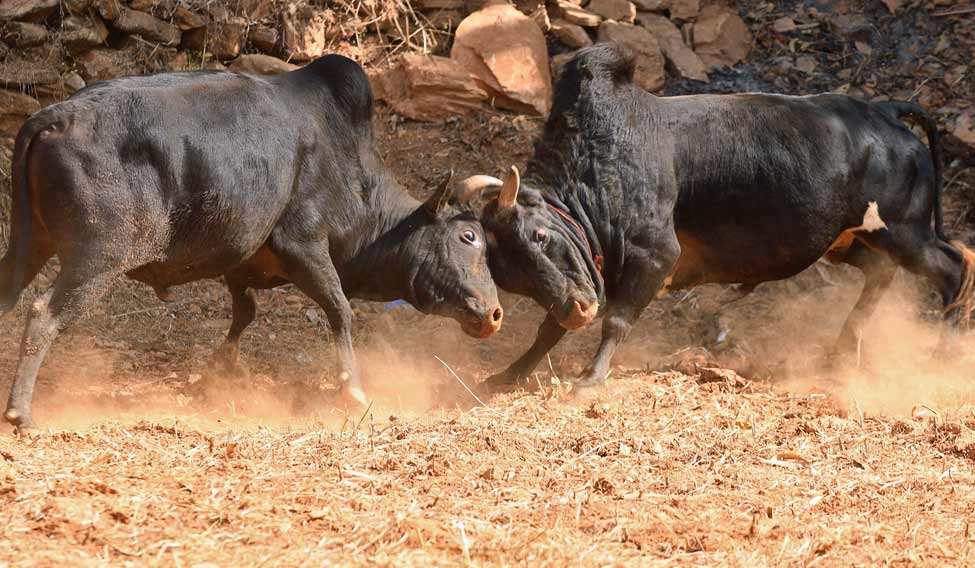The atmosphere was filled with festive fervor and dust hovered above the field as the age-old bullfighting festival commenced here.
The first day of the 10th month as per the Lunar Calendar, Magh is noted with the feast of Molasses. But in the mountainous district of Nuwakot, about 75 kilometers from the capital Kathmandu, celebrations are showcased with the bullfighting. This annual festival that roots back to 225 years has been driving spectators from adjoining districts.
The tradition, which dates back to 1887 B.S. was introduced by the then Prince of Bajhang Jay Prithivi Bahadur Singh for entertainment purpose while visiting his maternal uncle’s house. Since then, locals of the Taruka Village, esteemed for the bullfighting, have carried on with the tradition over the years.
“This is the tradition which we farmers have continued for years. We have been herding the bulls, and the government has been giving allowance to buy the tractors. However, we are not getting any sort of help or aid despite preserving the tradition for long,” said Bhoj Bahadur Bhandari, a participant of this tradition, while speaking on the growing influence of the modern technologies.
The annual festival of bull taming in Nepal is similar to “Jalikattu” in Tamil Nadu (India) and the Spanish Bullfight.
The victory over Tibet by the Nepali side in 1887 B.S. initiated the annual celebration of the bullfighting in the Betrawati, where 10 pairs of bulls fought to mark the day. Taruka, on the other side, witnessed the fight between 20 pairs of bulls on the same day.
However, the economic crisis is significantly impacting farmers and bull owners, despite which they want to continue the tradition.
Apart from the preservation of the traditional culture in the Himalayan nation with vivid cultural diversities, it also has been contributing towards tourism development in the area.





